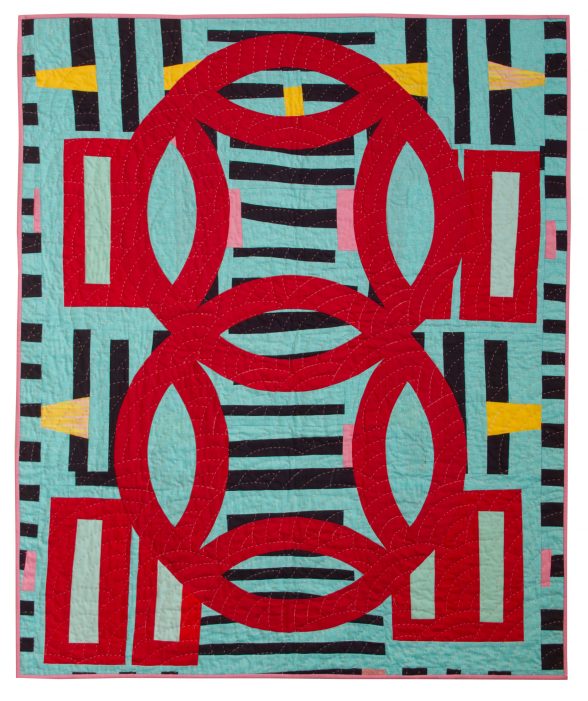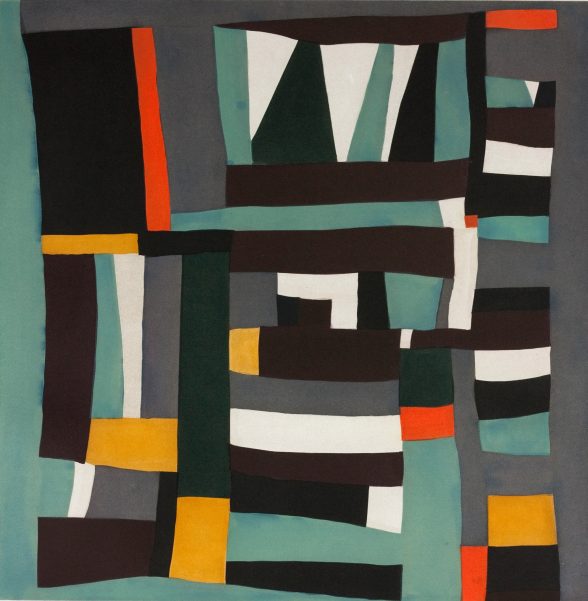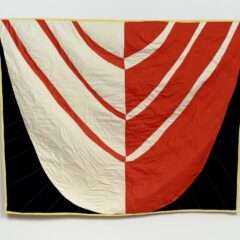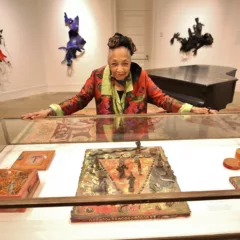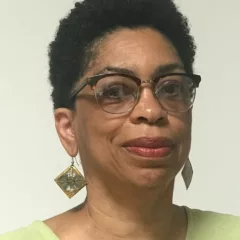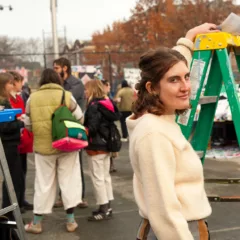In a 2004 PBS documentary about the Gee’s Bend quilters, Peter Marzio, Director of Houston’s Museum of Fine Arts, aptly praised their work’s ability to “express a joy and wonderment that makes you glad to be a part of the human race.” Luckily for us, a selection of works by Mary Lee Bendolph, now in her mid-80s and the most remarkable of that group, will be on view at Swarthmore College’s List Gallery through October 28, 2018.
Piece Together: The Quilts of Mary Lee Bendolph, Ms. Bendolph’s first solo show, includes quilts made between the 1970s and 2010 (from among the approximately 150 she sewed during her lifetime), as well as several brilliant, elegant prints she made in collaboration with master printers at Paulson Bott Press (now Paulson Fontaine Press). Organized first by the Mount Holyoke College Art Museum, South Hadley, Massachusetts, the show has been adapted by List’s Gallery Director, Andrea Packard, and includes a comprehensive exhibition catalogue featuring images of Ms. Bendolph’s work.
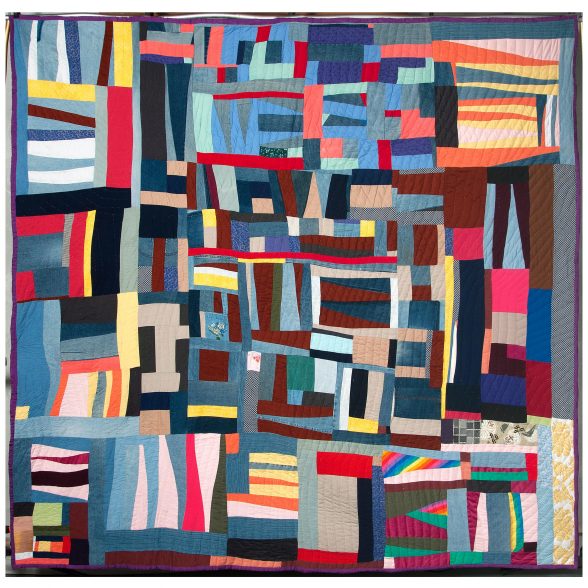
The quilts bring abstraction to the medium of textiles which subtly reflects the experiences and emotions of an African American woman who has lived her life facing, and to some extent overcoming, the hardships, poverty, and discrimination sewn by the racism which has defined, and continues to define, our country. It does not take a trained eye to appreciate Ms. Bendolph’s artistic brilliance or the uniqueness of her vision. Indeed, her work has been compared to the that of the masters of modern art, even to improvised jazz, and to the literature of Toni Morrison. The shapes that compose the quilts come together in unusual and unexpected ways. The result is asymmetrical, imperfect. Colors are rich and subdued; Patterns seem to appear, then disappear. Some of the quilts seem to reflect her African heritage; others seem almost minimalist. There is a simplicity, a gracefulness, a profound humility, an infectious beauty, a joy, and, critically, a deep faith, in all of Ms. Bendolph’s work.
A bit of history
The backstory of Ms. Bendolph’s life, together with the lives of her fellow Gee’s Bend quilters, has been told in many forums. The quilts began as utilitarian objects for the people living in Gee’s Bend, a remote, impoverished community located southwest of Selma, on a bend in the Alabama River, formerly a plantation. The community — renamed Boykin in 1949 — was essentially surrounded by water, with a single road in and out of the area, which was not paved until 1967. There was a ferry that once connected Gee’s Bend with Camden, Alabama, directly across the river, but service was discontinued during the 1960s, further isolating the community in order to prevent the residents of Gee’s Bend, who were becoming involved in the civil rights movement, from registering to vote.
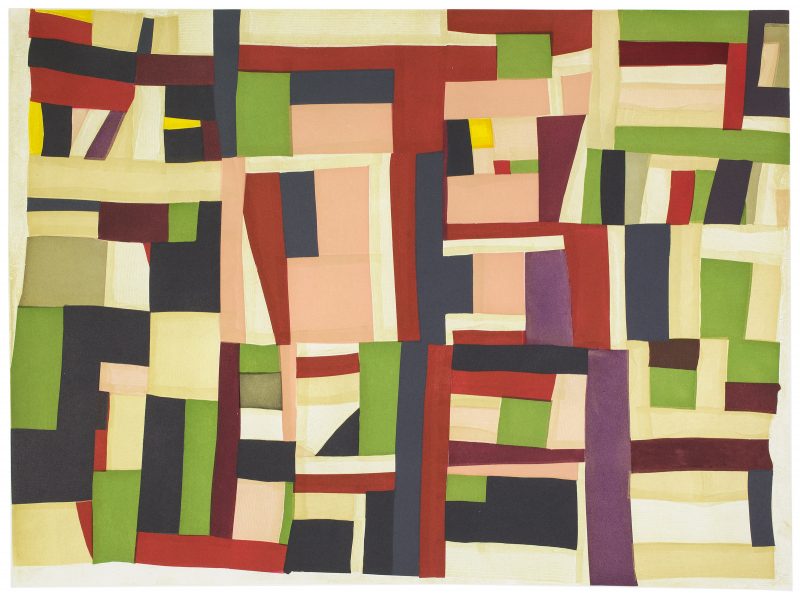
Gee’s Benders made quilts to keep their houses warm and their corn husk mattress soft. When one of the quilters lost her husband, she ripped up all of his clothing and incorporated it into a quilt which she wrapped herself in when she missed him. One of the legendary stories about Mary Lee Bendolph is that when her son returned home from college, he was unsurprised to learn that the clothes he had left in a closet had been lovingly transformed into one of her wonderful quilts.
Quilting also served as a force of unification in the community. The women of Gee’s Bend came together to make their quilts. They worked together, sang together, cried together, prayed together, survived together. In a sense, like the quilts, which were constructed from torn remnants of their families’ clothing and from discarded fabrics, quilt making bound the community together, enabling them to weather the forces of racism, which for decades threatened to tear them apart.
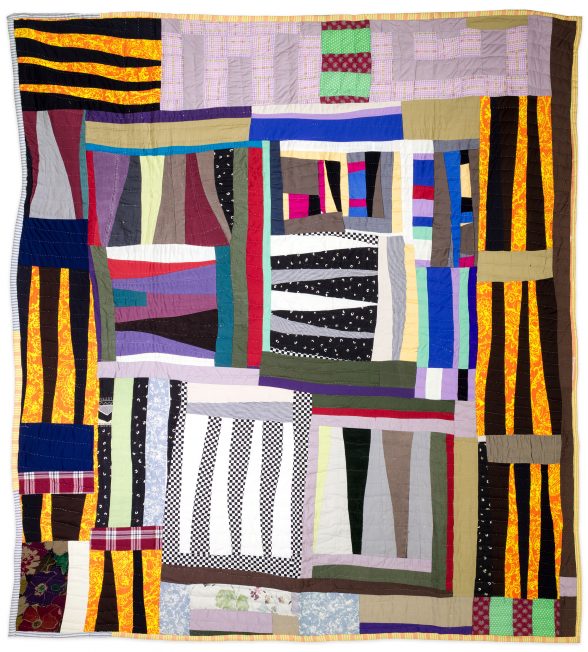
The quilters are “discovered”
Before they were “discovered,” Mrs. Bendolph and her fellow quilters would have been shocked to learn that their work would be perceived by outsiders as art. Indeed, they were shocked when, after the Museum of Fine Arts, Houston, mounted an exhibition of some 70 Gee’s Bend quilts in 2002, the art world began to recognize them and to celebrate their work. Following Houston, the quilts were shown in many museums including the Smithsonian, the Philadelphia Museum of Art, the Museum of Fine Art, Boston, the de Young Museum, and the Whitney Museum of American Art. Many Gee’s Bend quilters were, and remain, individuals leading sheltered lives in an isolated community in one of the poorest counties in the country. With little to no exposure to the art of others, they drew inspiration from their environment, from their daily lives, from their imaginations, and from the stories and legends of their ancestors.
Responses to Gee’s Bend
In its McCabe Library, Swarthmore is also putting on a parallel exhibit — Responses to Gee’s Bend. Curated by Ms. Packard, independent quilt maker Alicia Ruley-Nock, and Susan Dreher, Visual Initiatives and Exhibitions Librarian at Swarthmore, the exhibit features quilts by 17 artists from around the country (including several Swarthmore students), who created new works inspired by the aesthetic legacy and historic importance of Gee’s Bend. The exhibit also includes a group of fascinating WPA-era photographs of Gee’s Bend by Arthur Rothstein, as well as several additional quilts by Mary Lee Bendolph, one by her mother, Aolar Mosely, and two by her daughter, Essie Bendolph Pettway. In addition to showcasing work by Ms. Bendolph’s immediate family, and documenting some of the history of Gee’s Bend, the exhibit demonstrates the magistry of quilting inspired by Ms. Bendolph and her fellow Gee’s Bend quilters.
“Piece Together: The Quilts of Mary Lee Bendolph” will be on display at the List Gallery through October 28, 2018. On October 23rd, there will be a talk by the curators of Responses to Gee’s Bend at the McCabe Library. Also at that event, List will be distributing copies of its publication Gee’s Bend: Oral Histories, interviews of several of Gee’s Bend residents by two Swarthmore students.
References:
Documentaries on the Gee’s Bend quilters include “The Quiltmakers of Gee’s Bend,” by PBS (referenced above), “The Quilts of Gee’s Bend,” by the Souls Grown Deep Foundation, and last year’s “While I yet Live,” which features Mary Lee Bendolph and her daughter Essie Bendolph Pettway. The later film was previewed at Swarthmore at the opening of Piece Together: The Quilts of Mary Lee Bendolph. In 1999, Ms. Bendolph was also profiled in a Los Angeles Times article, “Crossing Over,” by Pulitzer Prize-winning J.R. Moehringer.
Artblog covered the Gees Bend quilt show at the PMA in 2008. See Roberta’s post, which includes a video of Mary Lee Bendolph and other quilters singing in front of their quilts at the museum. Also, the late artist and Tyler profesor, Frank Bramblett, who hailed from Alabama, wrote this moving appreciation of the Gees Bend quilters work seen in the 2008 PMA show.


